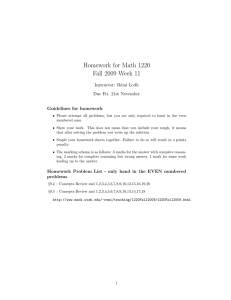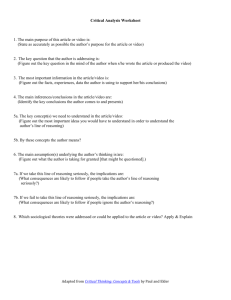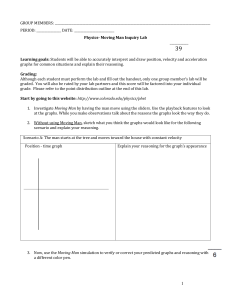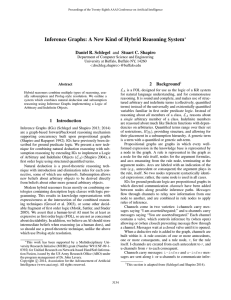Formal Lab Report Format
advertisement
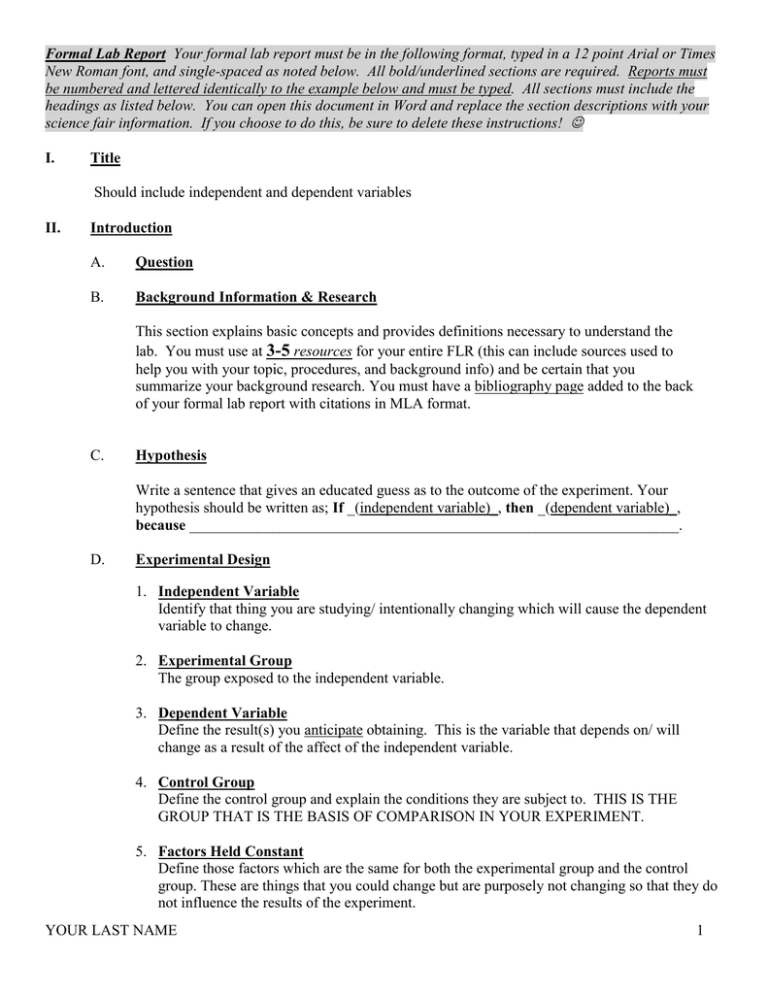
Formal Lab Report Your formal lab report must be in the following format, typed in a 12 point Arial or Times New Roman font, and single-spaced as noted below. All bold/underlined sections are required. Reports must be numbered and lettered identically to the example below and must be typed. All sections must include the headings as listed below. You can open this document in Word and replace the section descriptions with your science fair information. If you choose to do this, be sure to delete these instructions! I. Title Should include independent and dependent variables II. Introduction A. Question B. Background Information & Research This section explains basic concepts and provides definitions necessary to understand the lab. You must use at 3-5 resources for your entire FLR (this can include sources used to help you with your topic, procedures, and background info) and be certain that you summarize your background research. You must have a bibliography page added to the back of your formal lab report with citations in MLA format. C. Hypothesis Write a sentence that gives an educated guess as to the outcome of the experiment. Your hypothesis should be written as; If _(independent variable)_, then _(dependent variable)_, because _________________________________________________________________. D. Experimental Design 1. Independent Variable Identify that thing you are studying/ intentionally changing which will cause the dependent variable to change. 2. Experimental Group The group exposed to the independent variable. 3. Dependent Variable Define the result(s) you anticipate obtaining. This is the variable that depends on/ will change as a result of the affect of the independent variable. 4. Control Group Define the control group and explain the conditions they are subject to. THIS IS THE GROUP THAT IS THE BASIS OF COMPARISON IN YOUR EXPERIMENT. 5. Factors Held Constant Define those factors which are the same for both the experimental group and the control group. These are things that you could change but are purposely not changing so that they do not influence the results of the experiment. YOUR LAST NAME 1 III. Materials A bulleted list in single or multiple columns of all materials needed. Include quantity or volume of items when applicable. IV. Procedures A numbered list in a single column. Make certain these are very DETAILED and easy to understand. This is the recipe that others should be able to follow and re-do your project. V. Observations and Data A. Observations What you saw, smelled, heard, touched, etc. (include pictures). B. Data This section may include drawings, diagrams, data tables, graphs, etc. labeled thoroughly with units and titles. All data should be in metric form. The minimum you must have in this section are labeled data tables and graphs. C. Calculations Show any and all formulas needed to complete the laboratory. VI. Conclusion Follow the Claim, Evidence, Reasoning format. This should be written in paragraph format and contain the following information. CLAIM • This is the answer to your research question. • It is usually just one sentence. EVIDENCE • This is the scientific data that supports your claim. • The data needs to be appropriate and sufficient to support your claim. Appropriate data means that it actually supports your claim. Sufficient data means there is enough data to support your claim. REASONING • Reasoning is the justification that shows why the data counts as evidence to support your claim and includes appropriate scientific principles. • The reasoning ties in the scientific knowledge or scientific theory that supports your claim. • Reasoning links your claim to your evidence. VII. Sources of Error & Further Investigations Describe any real or possible mistakes. Describe any modifications that might be required to make the experiment more valid. YOUR LAST NAME 2


